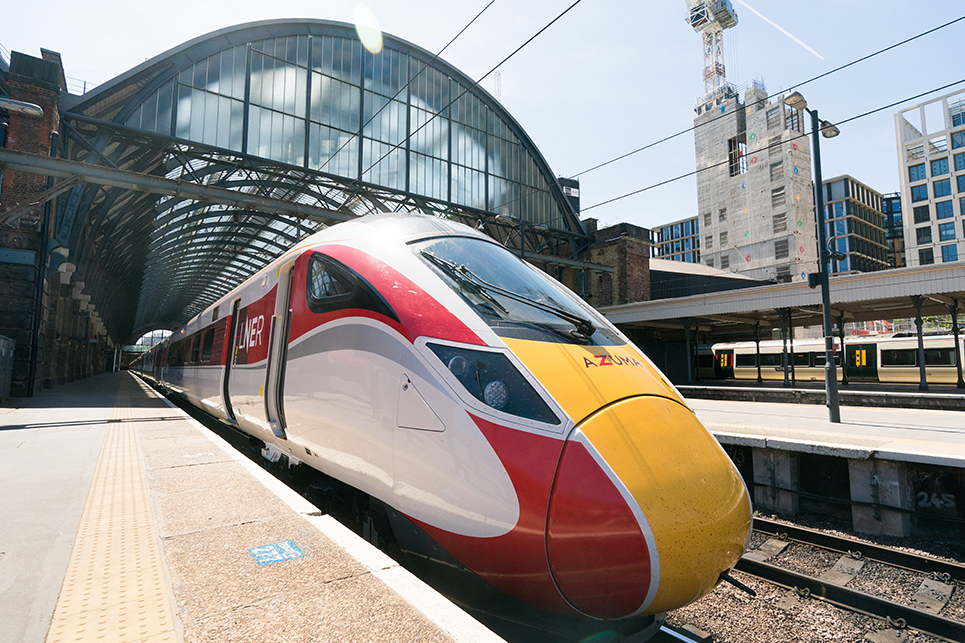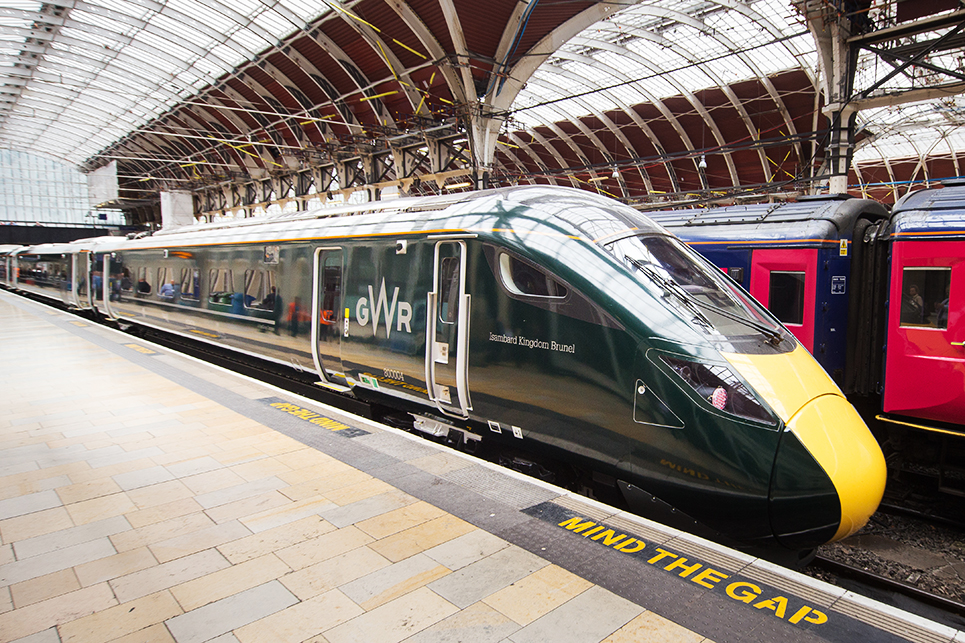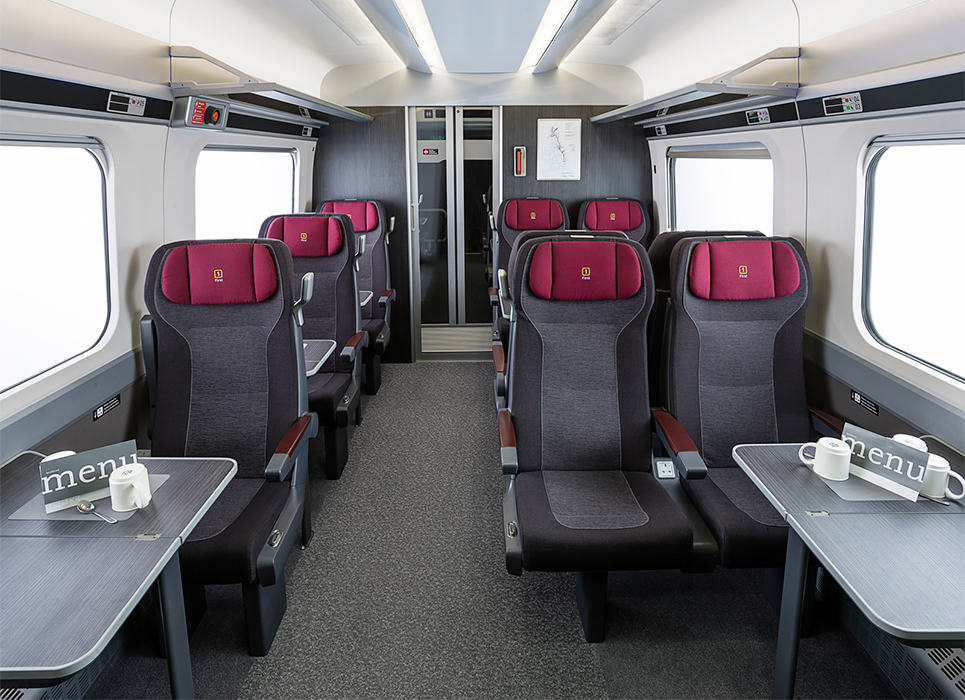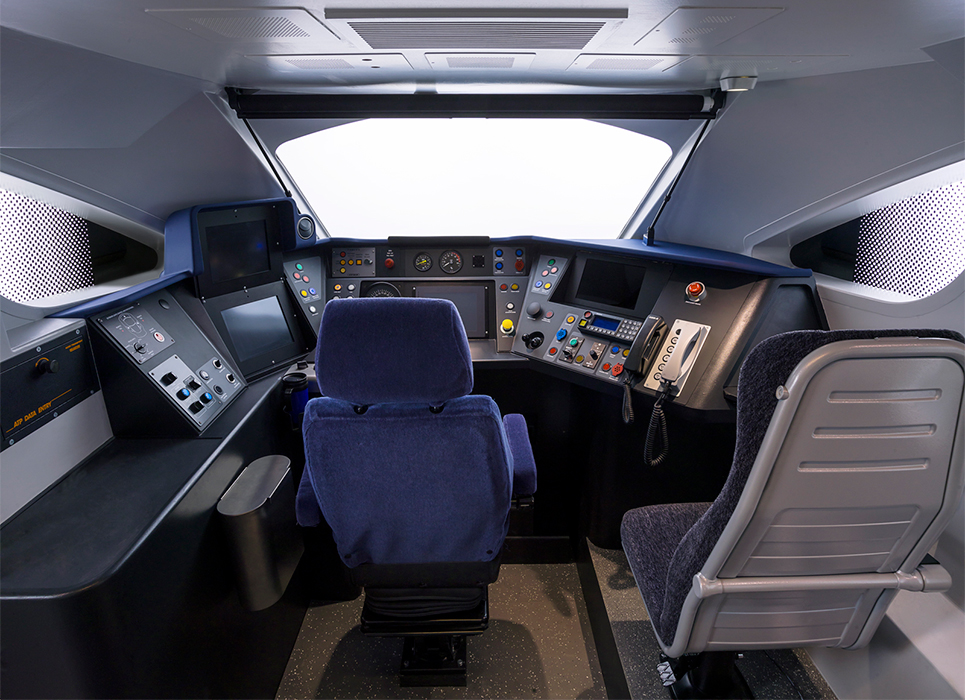Queen Elizabeth Ⅱ and Hitachi's “AT300” (Class800) at a ceremony commemorating the 175th anniversary of the first rail trip by the British royal family
Text by Reiko Imamura
Hitachi has been involved in the railway business for 100 years, after establishing the Kasado Works in Yamaguchi Prefecture in 1921. It has supported Japan's vital transportation infrastructure with rolling stock such as steam locomotives, electric trains, trams, Shinkansen, and monorails, as well as control devices, signaling systems, and maintenance and servicing. In addition to these domestic efforts, we have also turned our eyes on the global market such as in the UK since the late 1960s.
Although the UK is the birthplace of railways, there are no railway companies that own the tracks and rolling stock and operate the trains themselves like in Japan. The government instead owns the infrastructure, including the tracks and station buildings, and, through a bidding process, selects the operating company that will use the infrastructure to operate the railway lines. In this way, the operating companies purchase or lease the carriages from rolling stock manufacturers. In the UK, it is particularly important for operators to ensure that their trains do not wear out the tracks, do not break down, and keep running.
As such, the design requires not only passengers' comfort and convenience, but that it meet European and UK railway standards, Hitachi carry out own maintenance, and the brand be expressed as a rolling stock manufacturer.
After several unsuccessful attempts to enter the UK market since 1998, we won our first order in 2005 for the Class 395, which links London and Kent. Class 395 started its first commercial operation in June 2009 and its stable operation has earned us the trust as “Hitachi of the railway industry.”
The IEP (Intercity Express Programme) that followed was a project of an extraordinary scale, involving the delivery of 866 carriages for two lines connecting London with the north and west of England, and a maintenance contract for 27.5 years. We participated in the bidding by leveraging our Class 395 track record and proposed an in-depth localization plan that included the construction of a new rolling stock manufacturing plant, and were awarded the contract in 2012. Class 800 started its operation in October 2017. This is a grand project that builds on our brand established in the UK over the past 20 years.

Azuma, a train for the East Coast Main Line. Because it runs on the east coast, it was named Azuma, which means east in Japanese.
The design of Class 800 was highly appreciated for its symbolic image as the fastest high-speed train in the UK at the time. The biggest obstacle, however, was European standards and customer requirements. In the contract, we had to meet both the “standard,” which is a legal requirement, and the “requirement,” which is the request from the operating company. For example, the range of the driver's vision, the area where the headlights shine, the range of the wipers to wipe off the raindrops, etc., are defined in detail. Lawyers attend the design meetings to check whether the design standards are met as the project progresses.
The highlight of the exterior design is the head carriage, which is the face of the trains. While meeting European standards, we also wanted to express the identity of the Hitachi brand. For this purpose, we thoroughly analyzed the standards and came up with the concept of 4 Curves & 1 Straight Line to achieve both collision safety and aerodynamic performance. Its distinctive feature is the smooth exterior form, composed of flowing curves and sharp straight lines drawn in a single stroke from the top to the body of the carriages.
For the interior, we had to work to clear a large number of items on the list of standards. A full-scale wooden mock-up of the carriage was built, and visibility, operability, and placement of various switches and monitors were studied from an ergonomic perspective. We also built a full-scale mock-up of one and a half size carriage, which includes standard class, first-class and universal access toilets. We designed the seat layout, aisle width, luggage and bicycle storage space, etc., while incorporating the requirements of the operator.
It has been about three years since Class 800 began its operation. Now that the delivery of all 866 carriages has been completed, we are in the process of expanding sales of AT 300, a standard carriage based on Class 800. Not only has it become a popular commuter train, but it is also loved by passengers as the best train with cool looks and excellent amenities. Some of the carriages have Japanese nicknames, such as Azuma.
By 2023, there will be about 2,000 Hitachi carriages running in the UK. The advantage of Hitachi is that we have the technology, experience, and wisdom to respond to customer needs to the best of our ability, even for standardized carriages. Just as there are a wide variety of Shinkansen trains in Japan, we have been designing trains for many years that meet the needs of customers in want of trains with originality. We will continue to build on this strength for the European market as well.



AT300 exterior and first class interior, cabin.